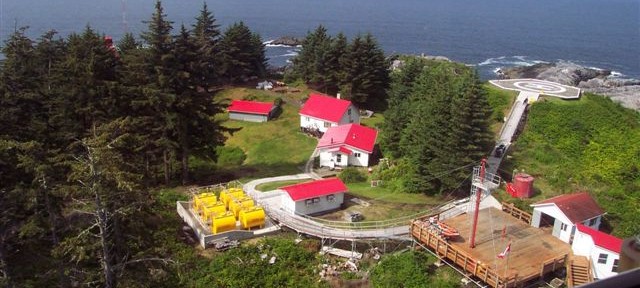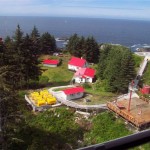
In my years on the lights there was always talk of finding a glass ball. The inside lights such as my first one at Pulteney Point![]() did not have too much chance of stopping a floating glass ball because of the strong tides.
did not have too much chance of stopping a floating glass ball because of the strong tides.
My first outside light [not sheltered by land] was Quatsino![]() but with only one beach at the back of the island and all the rest rocky it was nigh on impossible. Pachena
but with only one beach at the back of the island and all the rest rocky it was nigh on impossible. Pachena![]() wasn’t much better and we weren’t there long enough to hit the beaches around the area. Green Island
wasn’t much better and we weren’t there long enough to hit the beaches around the area. Green Island![]() was like Pulteney but we did find one or two there sitting in the pools.
was like Pulteney but we did find one or two there sitting in the pools.
So a real outside light was needed, and one was waiting!

We moved to McInnes Island![]() in 1977 and in the next couple of years we outfitted a fourteen (14) foot (4.27 m) Zodiac with a 25 HP Evinrude outboard with which we could go beachcombing. The children were still young then (see photo left) so a lot of the beachcombing was done alone with not much luck. Oh, I found a couple but nothing big. Then a friend came up and he found a larger one – about 12 inches (30.5 cms) in diameter along with a couple of small ones. Continue reading Glass Balls – The Dream of Every Beachcomber
in 1977 and in the next couple of years we outfitted a fourteen (14) foot (4.27 m) Zodiac with a 25 HP Evinrude outboard with which we could go beachcombing. The children were still young then (see photo left) so a lot of the beachcombing was done alone with not much luck. Oh, I found a couple but nothing big. Then a friend came up and he found a larger one – about 12 inches (30.5 cms) in diameter along with a couple of small ones. Continue reading Glass Balls – The Dream of Every Beachcomber

















